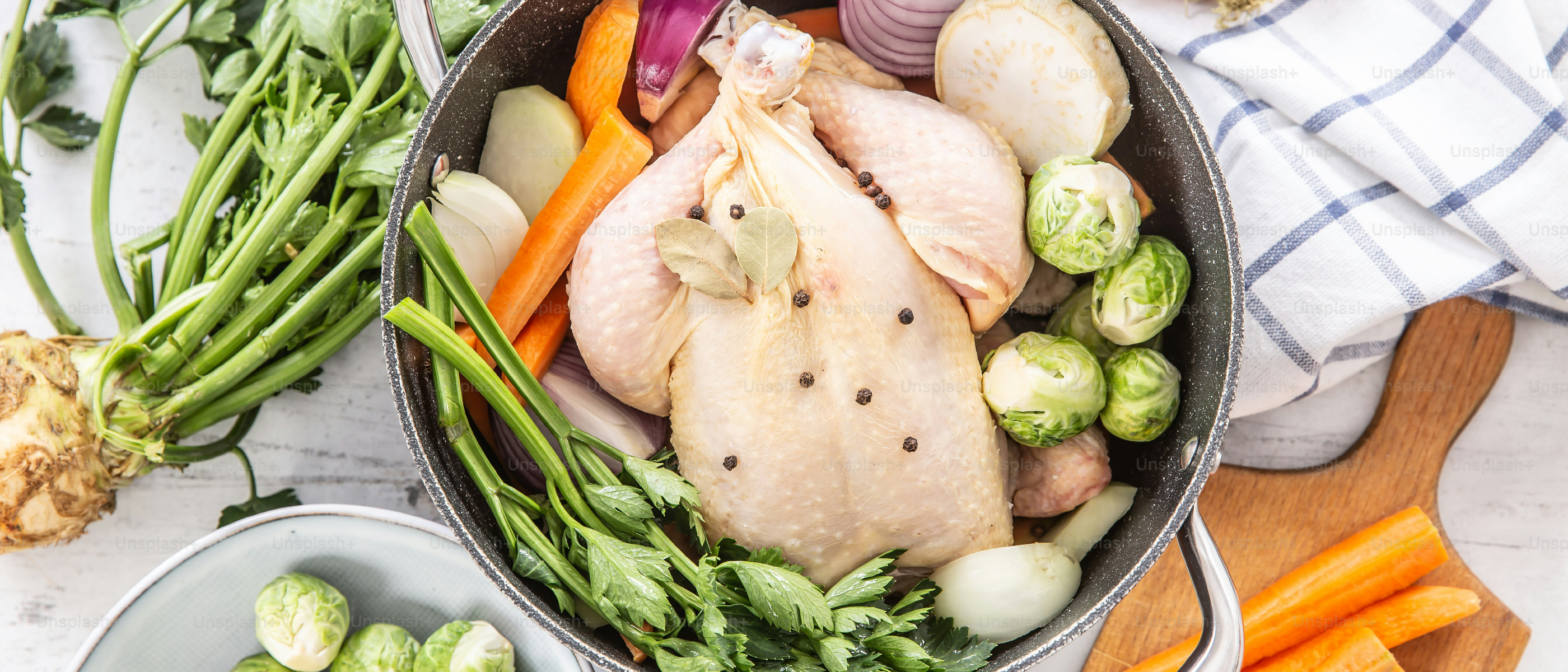What Happens to Your Body When You Eat Chicken Every Day
Posted on May 2, 2025 • 3 min read • 591 wordsExplore how daily chicken consumption impacts protein synthesis, cardiovascular health, and antibiotic resistance risks, with evidence-based guidance on cooking methods and sustainable dietary integration.

Introduction
Chicken has long been a staple in many global diets, celebrated for its versatility, affordability, and perceived health benefits. But what exactly happens to your body when you make chicken a daily part of your meals? To answer this, we’ll dive into scientific insights on protein intake, cardiovascular health, potential risks, and nutritional balance, supported by recent studies and dietary data.
1. Boosting Protein Intake: A Key to Muscle and Organ Function
Chicken is renowned for its high-quality protein content, which is essential for muscle repair, enzyme production, and immune function. A 100g serving of chicken provides approximately 10.1g of protein (based on nutrient data), making it a dense source of this macronutrient [1] .
For adults, the World Health Organization (WHO) recommends a daily protein intake of 0.8g per kilogram of body weight (e.g., ~56g for a 70kg adult). Daily chicken consumption can help meet this requirement, especially for active individuals or those recovering from illness. However, studies caution against over-reliance on animal protein alone. A 2025 study by Stiles et al. highlighted that replacing some animal proteins (like chicken) with plant-based proteins (e.g., legumes) can reduce greenhouse gas emissions and improve long-term health outcomes, such as lower risk of chronic diseases [2] .
2. Cardiovascular Health: Balancing Fats and Micronutrients
Chicken is relatively low in saturated fat compared to red meat, making it a heart-friendly choice. A 100g serving contains about 12.65g of fat, with most being unsaturated (healthy fats) that support cholesterol balance [3] .
However, the cooking method matters. Fried chicken or chicken with skin adds excess saturated fat and sodium, which can raise blood pressure. In contrast, grilled or baked chicken (without skin) aligns with the EAT-Lancet reference diet—a sustainable eating pattern linked to reduced risks of myocardial infarction and type 2 diabetes. A 2025 study by Wu et al. found that higher adherence to this diet (which includes moderate animal protein) was associated with a 32% lower risk of myocardial infarction and a 19% lower risk of type 2 diabetes in Chinese adults [4] .
3. Potential Risks: Antibiotic Resistance and Food Safety
While chicken is generally safe, overconsumption may pose risks. Poultry farming often uses antibiotics to prevent disease, which can lead to antibiotic-resistant bacteria in humans. A 2025 study in Ethiopia found that 88.9% of Salmonella isolates from chickens were resistant to three or more antibiotic classes, highlighting the need for stricter farming practices [3] .
Additionally, improper handling (e.g., cross-contamination with raw chicken) increases the risk of foodborne illnesses like salmonellosis. The study emphasizes the importance of proper cooking (chicken should reach 74°C internal temperature) and hygiene.
4. Nutritional Breakdown: Chicken’s Role in a Balanced Diet
To understand chicken’s daily impact, let’s examine its nutrient profile (per 100g edible portion):
| Nutrient | Amount per 100g | Daily Recommended Intake (Adult) |
|---|---|---|
| Calories | 250 kcal | 2000-2500 kcal (varies by activity) |
| Protein | 10.1g | 50-60g |
| Fat | 12.65g | 44-78g (20-35% of calories) |
| Saturated Fat | ~3g (estimate) | <20g (≤10% of calories) |
| Carbohydrate | 23.86g | 130g (minimum) |
| Dietary Fiber | 1.0g | 25-30g |
Note: Chicken provides minimal fiber, so pairing it with whole grains, vegetables, or legumes is key to meeting daily fiber needs.
Conclusion
Eating chicken daily can support protein intake and heart health when prepared and paired wisely. However, balance is critical: moderate portion sizes, skin removal, and alternating with plant-based proteins can mitigate risks like antibiotic resistance and nutrient gaps. By aligning chicken consumption with sustainable dietary patterns (e.g., the EAT-Lancet diet), you can enjoy its benefits while safeguarding both personal and planetary health.
Sources
-
Hamzehee Z, Torki M, Rashidi K, Abdolmohammadi A. Effects of dietary of Bacillus coagulans, whey powder, and their interaction on the performance of Lohmann LSL-lite laying hens in the late production phase.. PloS one 20:e0322557.(2025). doi:10.1371/journal.pone.0322557 ↩︎
-
Stiles G, Collins J, Beck K. 'A Necessary Idea Given Our Current Climate': A Qualitative Study of Stakeholder Perspectives and Actions Required to Increase the Proportion of Plant to Animal Protein in Hospital Patient Menus.. Journal of human nutrition and dietetics 38:e70059.(2025). doi:10.1111/jhn.70059 ↩︎
-
Mengistu G, Nuru A, Gelaw B, Moges F. Prevalence, antimicrobial resistance pattern, and associated factors of Salmonella serovars among human-animal interfaces in the Amhara National Regional State, Ethiopia.. BMC infectious diseases 25:771.(2025). doi:10.1186/s12879-025-11170-4 ↩︎
-
Wu M, Lv Y, Liu W, Liu K, Wang Y, Cui Z, Meng H. Exploring Environmental and Cardiometabolic Impacts Associated with Adherence to the Sustainable EAT-Lancet Reference Diet: Findings from the China Health and Nutrition Survey.. Environmental health perspectives 133:57028.(2025). doi:10.1289/ehp15006 ↩︎